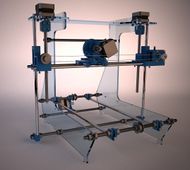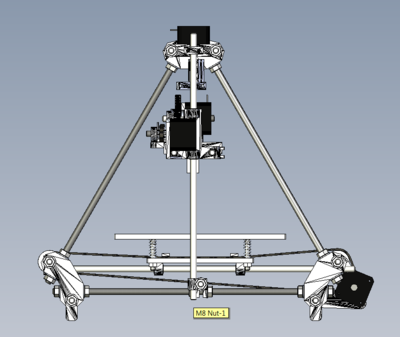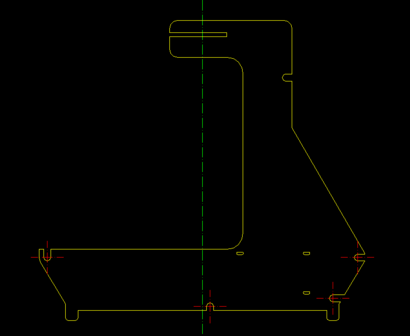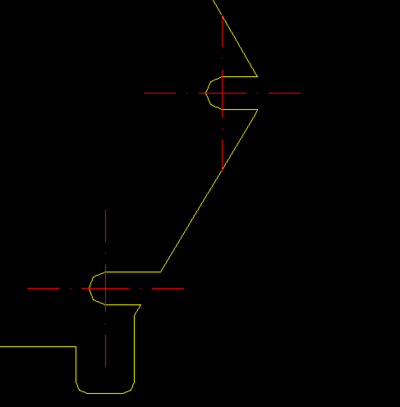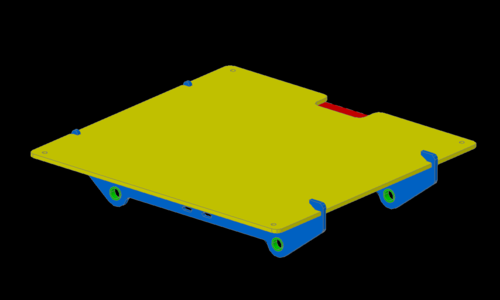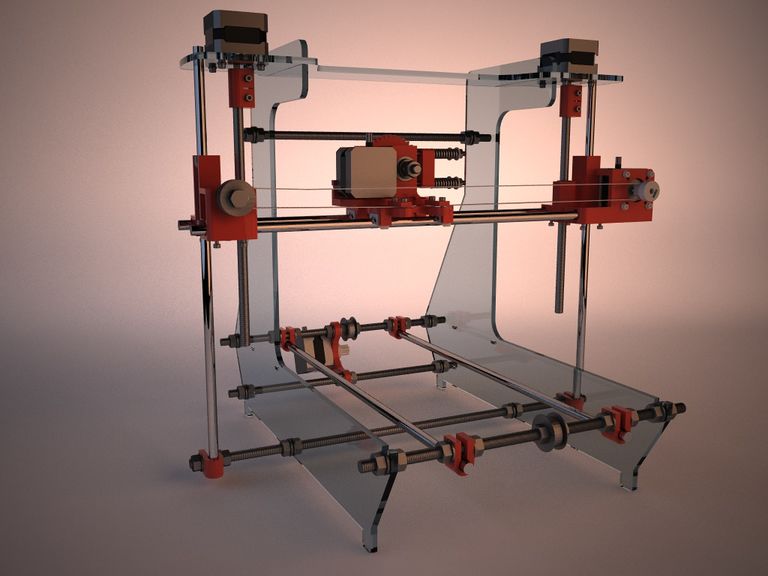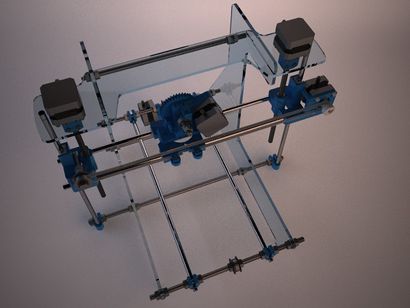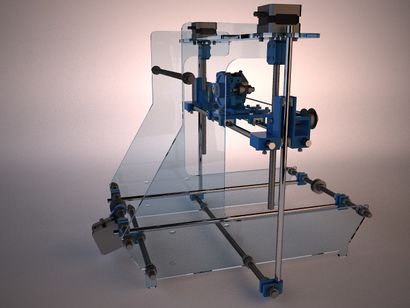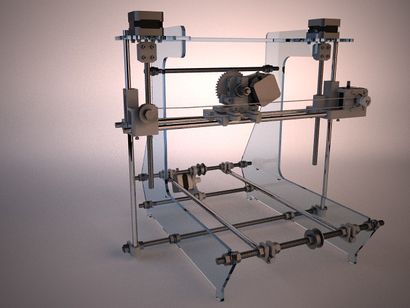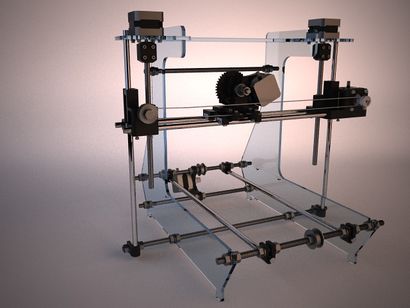RepRap Air
Release status: working
| Description | Simplified Prusa
|
| License | GPL
|
| Author | |
| Contributors | |
| Based-on | |
| Categories | |
| CAD Models | |
| External Link |
Main Features
Since I discovered the RepRap project I was surprised how much knowledge could be stored in an Internet community. I was impressed as a practical invention was able to born and grow in the network through the collaboration of specialists in various fields such as mechanics, electronics, computers ... all around the world.
In the mechanical field, It was a revolution when Josef Prusa got dramatically simplify the construction of a RepRap Mendel, current resulting Prusa, that has become a standard in building a RepRap. This also achieved make it much easier a person to be able to build a 3D printer.
The Prusa Air drinks from this spirit and tries to give a twist to the construction of a 3D printer. Its design is based on three basic principles:
1) To simplify the manufacturing and assembly (KISS principle).
2) Designing parts the cheapest way to be able to meet the requirements.
3) A little beauty.
With these guidelines, the use of RP parts is reduced for "commercial" pieces but always bearing in mind that they were readily available worldwide.
The changes are basically:
A) Most of the frame rods and RP pieces has been replaced by three pieces of acrylic embedded between them. They have followed all the design dimensions of Prusa, so for size, trips, electronics, firmwares... it works as a Prusa.
B) One of the sides of the typical Mendel triangle has been removed, resulting in a work area more accessible.
C) The holes for the rods have been changed so that the rods can be removed without having to completely unscrew the nuts.
D) The X and Z axis haven’t changed, they are exactly the same of a Mendel Prusa, the Y axis, as the guides are placed in the same way, you can choose to place a traditional Y-axis or mount a Y-axis with integrated heated platform that you can see in thingiverse.
Bill Of Materials
Here are all the parts needed to build the printer, not including carriage parts for the X axis, or for the Y-axis platform because they are considered independent subsets and each person can choose which place.
Printed Parts
| Piece | Description | Quantity | Coment |
|---|---|---|---|
 |
U-clamp | 6 | |
 |
Endstop Holder | 3 | |
 |
X End Idler | 1 | |
 |
X End Motor | 1 | |
 |
Y Motor Bracket | 1 | |
 |
Z couplings | 2 | Can be replaced by: http://www.thingiverse.com/thing:9622 |
 |
Pulley | 2 | Along with this will be a M3x8 grub screw and nut M3 |
 |
PLA bushings | 4 |
Rods and screws
Threated rods
The threaded rods shall be steel, zinc plated and M8, the cuts required are:
4 x 285 mm
2 x 210 mm
1 x 430 mm
If you cut they from 1 meter rods you will need two rods, the best way to cut is:
Rod 1: 285 - 285 - 430 ========> Total 1000 mm
Rod 2: 285 - 285 - 210 - 210 ===> Total 990 mm
Smooth Rods
Smooth rods should be 8 mm diameter stainless steel, the ideal is to get calibrated rounds that have a very tight dimensional tolerances (7.97 - 8 mm). The cuts required are:
4 x 410 mm
2 x 345 mm
In total would be about 2.35 m. The dimensions may be the same as those of Prusa but some have been slightly changed to minimize the number of different pieces.
Screws
Again I stress that this includes the hardware necessary for the printer without including extruder / X carriage or Y axis platform.
| Quantity | Set | DIN | For: |
|---|---|---|---|
| 43 | M8 nuts | DIN934 | For rods |
| 40 | M8 washers | DIN125 | For rods |
| 1 | M8x35 screw | DIN933 | Axis belt X carriage |
| 8 | M3x10 screws with nut | DIN912 | To fix X-Axis guides |
| 16 | M3x10 with washer | DIN912 | To fix the 4 motors |
| 7 | M3x20 screws with nut adn doble washer | DIN912 | Z couplings and Endstop Holders |
Screws DIN 912 are for allen wrench and installation much easier.
Finally would be to add the 3 608ZZ bearings, belts T5 840 and 900 mm long and 5 mm wide, and last, the 6 M8 fender washers with a diameter of 30 mm, these are very difficult to get, at least in Spain, and they can be replaced by washer-brimmed (DIN9021) of M10.
Infographics
Below are some Infographics made by Pikelo with Cinema 4D + Vray:
It's possible that the translation is wrong, the original was writen in Spanish. Feel free to correct it.
